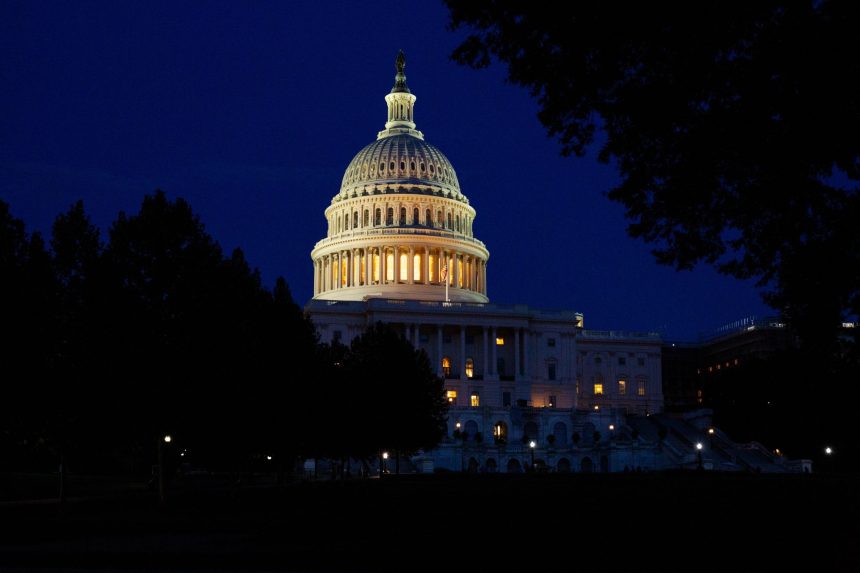The Biden administration has taken a crucial step to avoid a government shutdown by signing a 45-day funding bill. This move ensures that the government can continue its operations and provide essential services to the American people. In this article, we will delve into the details of the funding bill, its implications, and the broader context surrounding the decision.
The Funding Bill: Key Points and Implications
The funding bill signed by President Biden provides temporary funding for the government, ensuring its uninterrupted functioning for the next 45 days. This measure allows lawmakers to buy more time to negotiate and pass a comprehensive budget or continuing resolution. Here are some key points and implications of the funding bill:
- Avoiding a Government Shutdown: By signing the funding bill, President Biden ensures that federal agencies can continue their operations without interruption. This is especially crucial for essential services such as healthcare, national security, and infrastructure.
- Short-Term Solution: The 45-day funding bill is a temporary solution that provides a stopgap measure to prevent a government shutdown. It allows lawmakers to work on a long-term budget agreement without the immediate pressure of a looming shutdown.
- Bipartisan Support: The funding bill received bipartisan support in Congress, demonstrating a willingness to work across party lines to maintain the functioning of the government. This bipartisan effort reflects a commitment to stability and cooperation in governance.
- Negotiations for a Comprehensive Budget: The signing of the funding bill sets the stage for negotiations on a comprehensive budget or continuing resolution. Lawmakers will have the opportunity to address various funding priorities and allocate resources accordingly.
The Context: Government Shutdowns and Fiscal Deadlines
Government shutdowns occur when Congress fails to pass appropriations bills or a continuing resolution to fund federal agencies. These shutdowns can have far-reaching consequences, affecting government employees, services, and the economy. Understanding the context surrounding government shutdowns is crucial to comprehending the significance of the funding bill signed by President Biden.
- Previous Government Shutdowns: The United States has witnessed several government shutdowns in recent history. Notable examples include the 2013 shutdown, which lasted for 16 days, and the 2018-2019 shutdown, which lasted for 35 days. These events highlighted the disruptive nature of government shutdowns and the need for timely funding solutions.
- Fiscal Deadlines: Government shutdowns often occur when fiscal deadlines, such as the end of the fiscal year or the expiration of a continuing resolution, are not met. These deadlines create a sense of urgency for lawmakers to pass funding bills or risk a government shutdown.
- Impact on the Economy: Government shutdowns can have a significant impact on the economy. They disrupt government services, delay tax refunds, and can lead to furloughs or unpaid work for federal employees. Additionally, they can undermine consumer confidence and investor sentiment, affecting the overall business climate.
The Role of Congress and the President
The funding bill signed by President Biden highlights the role of both Congress and the President in the budgetary process. Understanding their respective responsibilities is crucial to comprehending the dynamics of funding bills and government shutdowns.
- Congressional Appropriations: The power of the purse lies with Congress, which is responsible for passing appropriations bills that allocate funds to federal agencies. These bills fund the government’s operations and outline spending priorities.
- Continuing Resolutions: In the absence of a comprehensive budget agreement, Congress can pass continuing resolutions to provide temporary funding and keep the government open. These resolutions extend funding at current levels until a long-term budget agreement can be reached.
- Presidential Signature: The President plays a vital role in the budgetary process by signing funding bills into law. The President’s signature ensures that the government can continue its operations and avoid a shutdown.
The Path Forward: Long-Term Budget Agreement
While the 45-day funding bill provides temporary relief, lawmakers must work towards a long-term budget agreement to ensure stable and predictable funding for the government. Negotiating a comprehensive budget involves addressing various priorities and finding common ground among lawmakers.
- Budget Priorities: Lawmakers must prioritize funding for essential services, such as healthcare, education, infrastructure, and national security. Balancing competing priorities and allocating resources effectively requires careful consideration and negotiation.
- Partisan Differences: Negotiating a long-term budget agreement often involves navigating partisan differences and finding areas of compromise. Bipartisan cooperation and a willingness to work across party lines will be crucial in reaching a consensus.
- Timely Action: To avoid future funding crises and government shutdowns, lawmakers must act in a timely manner. Addressing budgetary issues well in advance of fiscal deadlines allows for thorough deliberation and prevents the need for last-minute stopgap measures.
See first source: CNBC
FAQ
Q1: What does the 45-day funding bill signed by President Biden aim to achieve?
A1: The 45-day funding bill provides temporary funding for the government to prevent a government shutdown. It allows lawmakers additional time to negotiate and pass a comprehensive budget or continuing resolution.
Q2: How does the funding bill help in avoiding a government shutdown?
A2: By signing the funding bill, President Biden ensures that federal agencies can continue their operations without interruption. This is crucial for essential services like healthcare, national security, and infrastructure.
Q3: Why is the 45-day funding bill considered a short-term solution?
A3: The funding bill is a short-term solution because it provides a temporary stopgap measure to prevent a government shutdown. It gives lawmakers time to work on a long-term budget agreement without the immediate pressure of a shutdown.
Q4: Did the 45-day funding bill receive bipartisan support in Congress?
A4: Yes, the funding bill received bipartisan support in Congress, reflecting a commitment to cooperation and stability in government operations.
Q5: What is the broader context surrounding government shutdowns and fiscal deadlines?
A5: Government shutdowns occur when Congress fails to pass funding bills or continuing resolutions. Fiscal deadlines, such as the end of the fiscal year, create urgency for lawmakers to pass funding bills to avoid a shutdown.
Q6: What are the potential consequences of government shutdowns on the economy?
A6: Government shutdowns can disrupt government services, delay tax refunds, lead to furloughs or unpaid work for federal employees, and affect consumer confidence and investor sentiment, impacting the overall economy.
Q7: What roles do Congress and the President play in the budgetary process and funding bills?
A7: Congress is responsible for passing appropriations bills that allocate funds to federal agencies and can pass continuing resolutions to provide temporary funding. The President signs funding bills into law to keep the government open.
Q8: What is the path forward after the 45-day funding bill, and why is a long-term budget agreement important?
A8: Lawmakers must work toward a long-term budget agreement to ensure stable and predictable funding for the government. This involves addressing budget priorities, navigating partisan differences, and taking timely action to prevent funding crises and government shutdowns.
Featured Image Credit: Darren Halstead; Unsplash – Thank you!







